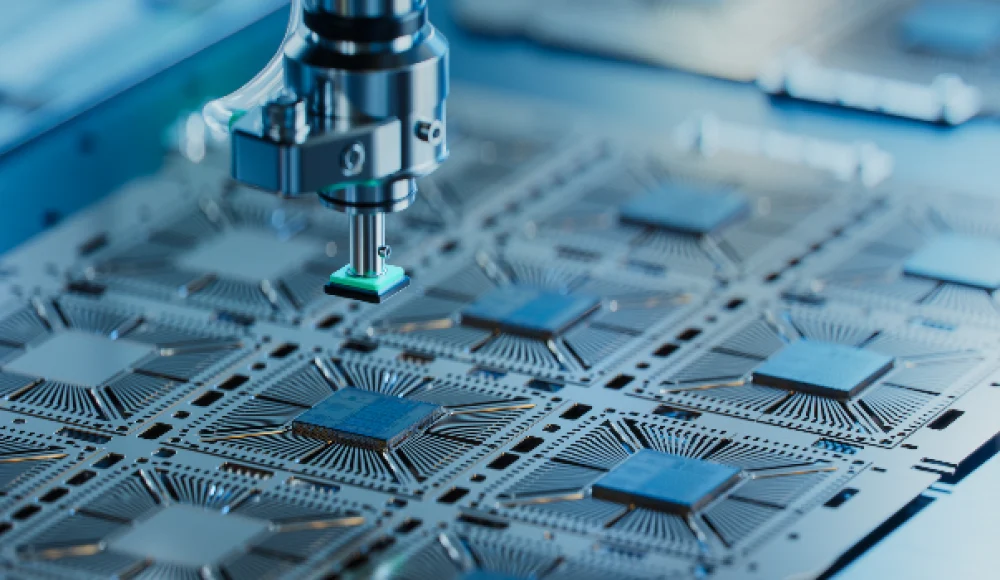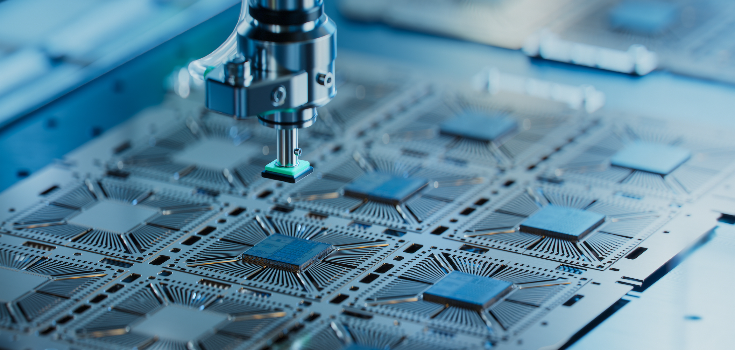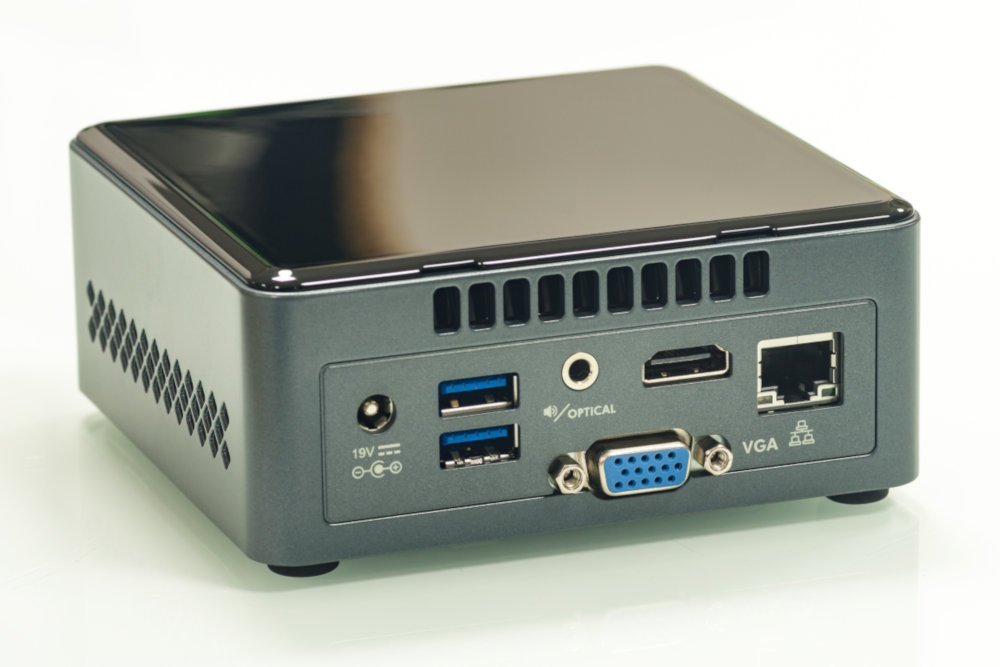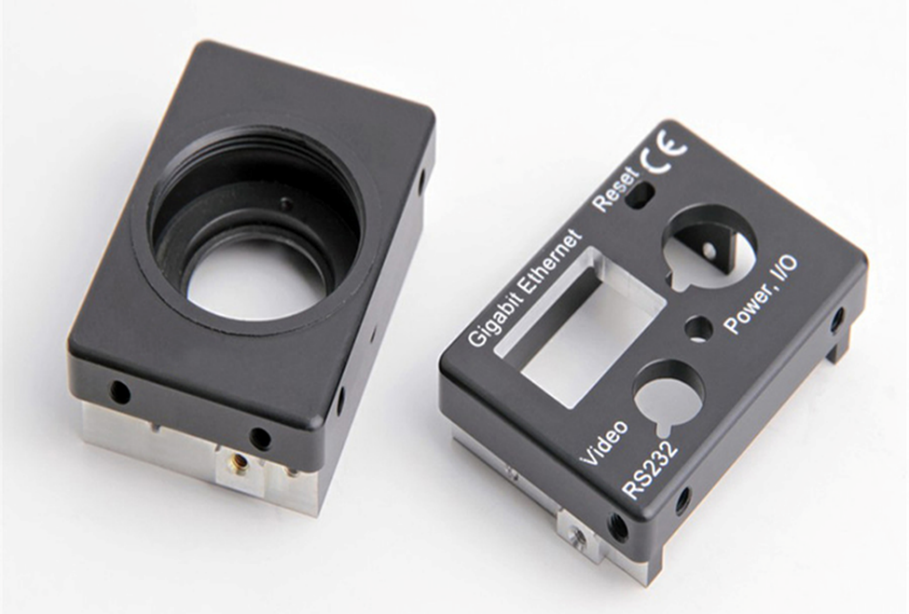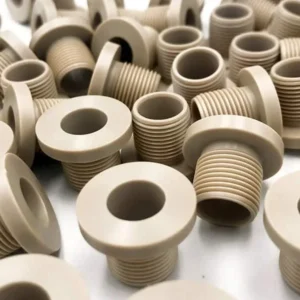Секторът на електрониката изисква все по-малки компоненти, по -строги допустими отклонения, и бързо време за пускане на пазара. CNC обработка отговаря на тези нужди, като доставя точност, повторяемост, и гъвкавост - независимо дали прототипирате ново оформление на PCB или произвеждате хиляди радиатори. Това дълбоко гмуркане изследва как CNC трансформира производството на електроника, Какво части, които можете да направите, което Участват техники и материали, и как Повърхностните завършвания и усъвършенстваните възможности повишават вашите продукти.
Как обработката на CNC е от полза за производството на електроника
Последователно качество
Автоматизирана точност: Програмите на CNC изпълняват същите пътеки с инструменти към точността на нивото на микрона, Елиминиране на променливостта на оператора.
Комплексни функции: От микроканали на охлаждащи плочи до фино маршрутизиране на печатни платки, CNC машините държат тесни допустими отклонения след част.
Висока точност & точност
Тесни допустими отклонения: Електрониката често изисква ± 0,005–0,001 mm. Съвременните центрове за многооси CNC рутинно постигат тези спецификации.
Fit & функция: Прецизни функции за чифтосване (Дубели дупки, приплъзване) Осигурете надеждно компоненти, предотвратяване на несъответствие, което може да съсипе веригите.
Бързо създаване на прототипи
Ниски разходи за инструменти: За разлика от инжекционното формоване, CNC прототипите не се нуждаят от скъпи форми - просто CAD модел и настройка.
Итеративен дизайн: Инженерите могат да тестват формуляр, годни, и функционират в рамките на дни, След това усъвършенствайте пътеките с инструменти незабавно за следващия цикъл.
Мащабируемост & Персонализиране
Гъвкави бягания: Превключете от един прототип към стотици, без да преоборудвате, Просто чрез зареждане на нова програма.
Части при поискване: Персонализирани конектори, специализирани корпуси, или еднократни части за ремонт-CNC разполага с малки или големи партиди с еднаква лекота.
Намалени времена на олово
Няма сложен инструмент: Настройките на ЦПУ включват скоби и тела, не персонализирани форми или щамповане умира.
Бързи смяна: Съвременни системи за смяна на инструменти Разменете инструменти за рязане в секунди, Поддържане на производството се движи бързо.
Обикновени електронни продукти, обработени от ЦПУ
CNC обработката се използва за направата на всички видове електронни части - Big, малък, просто, и супер прецизно. Нека го разделим на части от реалния свят, които вероятно сте виждали (или дори използван) Без да осъзнават, че са дошли от машина за ЦПУ.
Печатни платки (PCBS)
Това са плоското зелено (или синьо) табла във вътрешността на почти всяко електронно устройство. CNC машините помагат да се изреже точната форма, Пробийте малки дупки, и дори издълбайте пътеки, за да тече електричество. Без прецизност на ЦПУ, Тези табла не биха се победили или работят правилно.
Радиаторни минки
Някога се чудите как вашият лаптоп или игрална конзола не прегрява? Това отчасти благодарение на радиаторите - малки метални части с перки, които издърпват топлината от процесорите. CNC машините оформят тези точни характеристики, за да могат да поддържат електрониката хладна и безпроблемно.
Заграждения и обвивки
От черупки на смартфони до контролни корпуси на кутиите, Обработката на ЦПУ помага да се създадат външните тела, които защитават деликатната електроника. Независимо дали е алуминий за здрава външна обвивка или пластмаса за елегантен калъф за телефон, CNC помага да го направи и да изглежда точно правилно.
Конектори и щепсели
Обработката на ЦПУ прави мънички метални или пластмасови конектори, които позволяват на кабелите да се прилягат плътно - като USB портове, Зареждащи конектори, или щифтове за трансфер на данни. Прецизността е всичко тук, или нещата просто няма да щракнат на място.
Превключватели и бутони
Бутоните за захранване, превключватели, и контролните копчета, които използвате на електронни устройства, често са обработени с CNC, за да се уверят, че се чувстват правилно и продължават дълго. Особено за персонализирана или индустриална електроника, CNC осигурява перфектни форми и надеждно движение.
Полупроводникови компоненти
Във високотехнологична електроника, CNC се използва за приготвяне на рамките, Покрития, и охлаждащи части за полупроводници - мъничките чипове, които захранват всичко от вашия телефон до спътници.
Корпути на камера и сензори
За дронове, охранителни камери, и медицински скенери, Обработката на ЦПУ помага да се създадат компактни корпуси, които защитават лещите и сензорите, като същевременно позволява прецизно подравняване на производителността.
CNC техники за електроника
Високоскоростни шпиндели: 20,000–60 000 оборота в минута издълбават малки функции с 0,5–1 мм крайни мелници.
Микромилинг: Инструменти толкова малки като 0.2 mm Активирайте фини канали на микрофлуидни печатни платки или топлинни разпръсквачи.
Стругове на живо: Комбинирайте операции за завъртане и смилане на щифтове, противопоставяне, и вложки с резба в една настройка.
Високо прецизни шахти: Постигане на концентричност на няколко микрона за електрически контакти.
Глави с много шпиндели: Пробиване на масиви от виа или монтиращи дупки едновременно, Намаляване на времето на цикъла.
Peck Cycles: Ясни чипове в дълбоки отпечатани пробити дупки, за да се избегне бурченето и прегряването.
CNC гравиране
Лазерно маркиране: Безконтакт, Серийни номера с високоскоростни лазери офорти, баркодове, или лога на корпуси без износване на инструмента.
Диамантена гравиране: На твърди пластмаси или метали за тактилни превключватели и легенди с контрол на дълбочината на микроново ниво.
Общи материали в обработката на електроника
Метали
Алуминий: 6061, 5052 сплави за леки заграждения, радиатори, и Еми Шийлдс.
Мед & Медни сплави: Обработени за високоефективни термични приложения и електрически контакти.
Месинг: Корозионна устойчивост и добра проводимост за конектори и декоративни тапицерии.
Неръждаема стомана: Структурни опори, крепежни елементи, и грапави корпуси, които изискват издръжливост.
Неметали
Инженерна пластмаса: PEEK, коремни мускули, настолен компютър, и PTFE за изолация, Показване на дисплея, и химически устойчиви части.
Акрил & Поликарбонат: Прозрачни прозорци, леки водачи, и устойчиви на удара панели.
Композити & Ламинати: FR-4, G-10 за ПХБ; Специални композити за RF и приложения с високо напрежение.
Типични повърхностни облицовки за електронни компоненти
Бластиране на мъниста: Еднообразно матово завършване, което крие марки за инструменти и подобрява адхезията на боя.
Безелектрическо никелиране: Подобрява устойчивостта на корозия и повърхностната проводимост върху металните части.
Анодиране: Добавя траен оксиден слой (и опции за цвят) до алуминиеви заграждения.
Прахово боядисване: Декоративна, устойчиви покрития в разнообразни цветове и текстури.
Пасивация: Почиства и укрепва неръждаемата стомана, предотвратяване на повърхностното окисляване.
Полиране: Огледалата завършва на контакти и RF уплътнения за оптимална проводимост.
Възможности за обработка на ЦПУ в електрониката
Центрове с многооси: 5-Оста на гантри и мелници Машини, дълбоки кухини, и ъглови дупки в една настройка.
Микромахиниращи вретена: Вретена с висока RPM (до 100,000 RPM) за ултра-фини функции.
Автоматизирано сондиране: Системите за измерване на машината проверяват критичните размери в средата на цикъла.
Операция за светлини: Автоматизираните смяна на инструменти и захранващите бар позволяват да се изпълняват през нощта на производството.
Хибридна добавка/изваждане: Комбинирайте CNC със селективно лазерно синтероване за конформни канали за охлаждане или интегрирани структури.
Заключение
Обработката на ЦПУ дава възможност на производителите на електроника да доставят прецизност, последователност, и скорост, че нито един друг изваждащ процес не съвпада. От сложно маршрутизиране на печатни платки до стабилни заграждения на EMI, Гъвкавостта и точността на CNC помагат да се оживеят съвременните електронни устройства. Чрез разбиране на правилните техники, материали, и завършвания-и използване на усъвършенствани възможности за ЦПУ-можете да постигнете части, които отговарят на най-строгите отклонения и най-бързия от време на пазара.
Често задавани въпроси
Какво задвижва разходите за обработка на електроника CNC?
Сложност на части, Избор на материали, Изисквания за толерантност, и обем на производството на всички фактори в ценообразуването.
Какви отклонения могат да постигнат електрониката CNC обработка?
Типичните отклонения варират от ± 0,005 mm до ± 0,001 mm, В зависимост от методите на прецизността и проверката на машината.
По -добре ли е обработката на ЦПУ от 3D печат за електроника?
CNC предлага превъзходен избор на материали (метали и високоефективни пластмаси), по -строги допустими отклонения, и по -добри повърхностни облицовки за функционални електронни части - Whereas 3D печат се отличава с сложни вътрешни геометрии и бързи концептуални модели.

